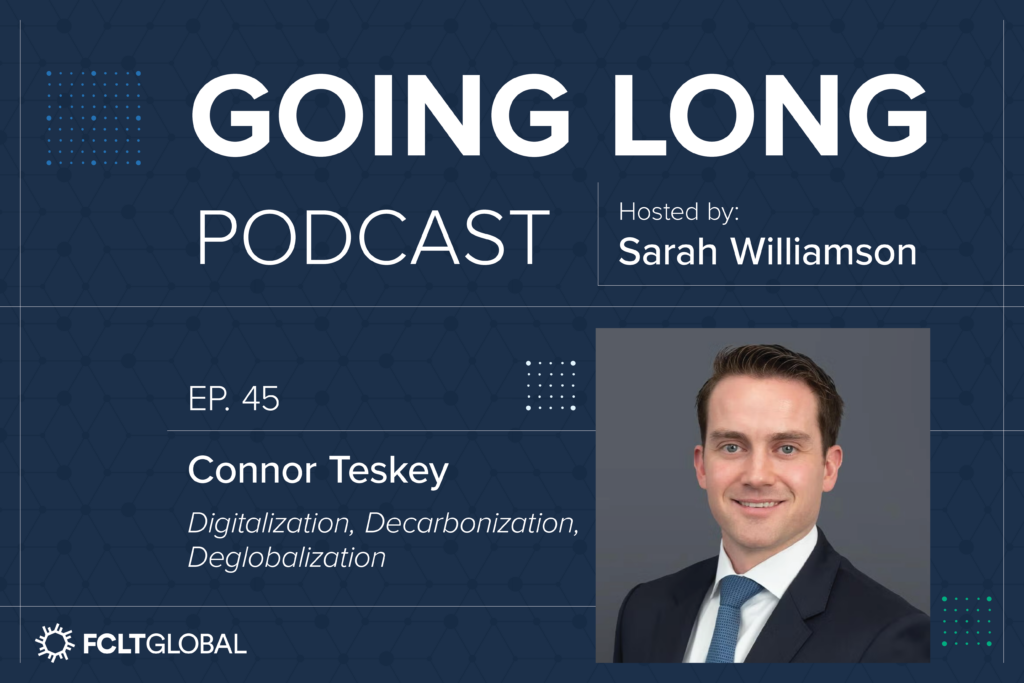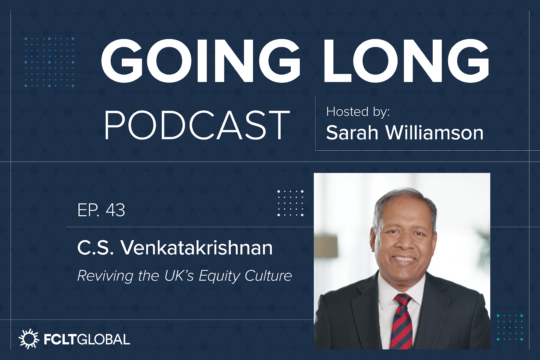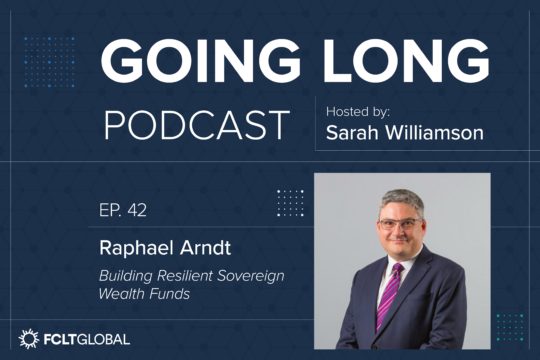
“The capital requirements to capture the growth opportunities in these trends are so significant that […] they outstrip what is available from governments and […] from the public markets, and that is creating a very large and attractive opportunity for private capital.”
In this episode, Sarah Williamson speaks with Brookfield’s Connor Teskey on several key trends affecting the global economy, investment strategies, and the role of private capital in shaping the future, ranging from technological advancements and decarbonization to the growing importance of private real assets. This discussion offers valuable insights into the opportunities and challenges investors face in a rapidly changing global landscape.
Topics include:
- [00:05:00]– The role of technology in investment and AI’s emerging influence on industries like energy, transportation, and manufacturing.
- [00:09:30]– Renewables, particularly onshore wind, solar, and battery storage as the dominant low-cost energy solutions, and the geopolitical benefits of domestic renewable energy sources.
- [00:19:00]– Short-term vs. long-term investment horizon and the stability of real assets during periods of market volatility.
- [00:24:00]– Liquidity in real assets, and the growing investor interest in real assets for their inflation-hedging and stabilizing qualities.
- [00:28:00]– Growth of private capital, particularly the shift towards partnerships with large corporations.
- [00:34:00]– Future trends in asset allocation, market volatility, and how private markets will continue to expand.
The Role of Technology in Investment
One of the overarching themes discussed in this episode of the Going Long Podcast is the importance of technology, particularly artificial intelligence (AI), in reshaping industries and investment approaches. Teskey uses the analogy of the elevator’s invention to illustrate how innovation can lead to unexpected and far-reaching outcomes. While AI is still in its early stages, its integration into sectors like energy, transportation, and manufacturing is predicted to have profound effects. As AI becomes more energy-intensive, there is a growing demand for cheap and sustainable electricity, which is boosting the renewable energy sector.
Renewable Energy and Decarbonization
Teskey stresses that the growth of renewable energy has been driven more by economics than environmental sentiment. Technological advances have made wind and solar the cheapest forms of bulk electricity production globally. This economic advantage, combined with a growing demand for electricity (partly due to electrification across industries and the rise of AI), has cemented renewables as a key player in the global energy transition. Additionally, renewables provide security by reducing reliance on imported energy sources, offering nations a competitive advantage and a path toward energy independence.
The Rise of Private Real Assets
Over the past decade, investors have increasingly turned to real assets—such as infrastructure, manufacturing, and energy production—not only for diversification but also as a hedge against inflation. Teskey points out that real assets are much more insulated from daily market fluctuations and can provide stability and long-term value. This trend, once reserved for large institutional investors, is now becoming more accessible to a broader pool of investors, including retail investors.
Liquidity and Illiquid Assets
Another challenge is investing in illiquid assets, especially during periods of market volatility. Teskey acknowledges that while real assets are inherently less liquid than stocks or bonds, they offer stability and a reliable return on investment. The liquidity of the real assets market has improved over the years, making it more attractive to a wider range of investors. Despite concerns over short-term market volatility, the long-term performance of real assets has proven to be strong, especially as the demand for infrastructure and critical services continues to rise.
Partnerships with Corporates
One of the more surprising trends is the growing number of partnerships between private capital firms and major corporations. Despite having significant access to public capital, companies like Intel, Microsoft, and Deutsche Telekom are increasingly turning to private capital for funding and operational expertise. These collaborations are not just about money; they are about operational support and the ability to capture growth in areas like clean energy, technology, and infrastructure. Teskey predicts that this trend will continue to accelerate, as the scale of challenges like decarbonization and digitalization outstrips the resources available from governments or public markets.
Long-Term Investment Trends
Looking forward, Teskey sees several key investment trends. The growing allocation to real assets in investor portfolios is one of the most significant developments. Private assets are seen as a safer, more stable option as public markets become more volatile. This trend is expected to continue, with private markets expanding significantly in the next decade. The growing interest in partnerships between private capital and major corporations reflects the need for expertise, operational support, and financial resources.
The podcast concludes with a look at demographics and the potential impact they will have on investment strategies in the future. Though hard to predict, Teskey notes that the ability to adapt to demographic shifts, such as aging populations and urbanization, will be crucial for long-term success.
This conversation with Teskey provides a comprehensive look at the current landscape of private capital, real assets, and the future of investment. The key takeaway is that economic forces—rather than political or regulatory factors—drive much of the investment in renewables and private real assets. Additionally, the growing demand for operational expertise alongside capital is reshaping how major corporations engage with private investors. Looking ahead, private markets are expected to continue their growth, offering opportunities for long-term, stable investments.
As the world faces significant challenges such as decarbonization, deglobalization, and digitalization, the role of private capital in capturing growth opportunities and driving innovation will be more critical than ever.


